农业现代化过程中基础设施工程化路径与方法
齐 飞,周新群,吴政文,张学军
农业现代化过程中基础设施工程化路径与方法
齐 飞1,2,3,周新群4,吴政文1,3,张学军1,3
(1. 农业部规划设计研究院,北京 100125;2. 新疆农垦科学院,石河子 832000;3. 农业部农业设施结构工程重点实验室,北京 100125;4. 农业部规划设计研究院科技管理处,北京 100125)
中国农业现代化是在一个高速变化的社会巨系统中发展进步的,农业基础设施作为先导性核心要素之一,复杂性、动态性、开放性也在不断提高,需要用现代的工程理论和方法来确保基础设施建设质量与综合效益能够支撑农业现代化的整个进程。该文以工程硬件特征明显的生产性基础设施为研究对象,对农业现代化要求下的农业基础设施概念、内涵、特征、内容、现状进行了研究分析;提出了农业基础设施工程化的概念、特征、内容、相互关系和发展趋势。分析表明,农业基础设施工程化总体上就是将工程的理念、方法、技术、结果运用到农业工程建设领域,在路径上要在微观和宏观2个层面加以推动,微观上要将工程战略、工程决策、工程准备、工程实施以及工程运营的工具和方法贯穿在农业基本建设项目生命周期的全过程;宏观上就是将各类建设事项的综合决策、实施、评价3个环节科学衔接,在整体推进的时间、程度、目标等方面实现系统化、协同化和最优化,最大程度地发挥出农业基础设施对中国农业现代化长期稳定的基础支撑作用。在中国农业现代化需要加速推进的现实下,农业基础设施工程化的内容亟待丰富、水平亟待提高,该研究提出的观点、方法、工具将对推动这一进程提供有益的参考和借鉴。
农业;工程化;建筑物;现代农业;基础设施;路径;方法
0 引 言
农业现代化的过程是一个物质条件、组织形式、制度体系不断优化的历史过程,根本路径与核心目标是通过提高农业生产的土地产出率、劳动生产率和资源利用率来推动农业可持续发展、农村持续繁荣、农民持续增收。农业基础设施是支撑农业现代化发展的重要物质条件与核心要素,对农业现代化的过程与目标产生显著影响,最直接的效果就是通过农业增产[1-2]、增效[3-4]提高了农民收入。在“十三五”期间,农业基础设施建设对促进中国区域经济增长[5-8]、提高农村居民消费水平[9-11]和脱贫[12-14]攻坚等重大目标的实现将更加重要、更加紧迫,为此国家继续着力加强农业基础设施建设[15]。中国农业现代化发展至今,基础设施建设已经取得长足进步,但依然面临着农业基础设施供给总量不足、农户满意率不高、适合农业新型经营形式的建设需求未能有效满足[16-17]以及资源区划、资金不足、农民积极性低[18]等问题和挑战。受农业基础设施的准公共产品属性以及与经济增长的高度相关性[19]影响,这些问题和矛盾都将在中国经济社会发展的新常态下长期存在,因此,提高投融资效率和建设使用效益是发挥农业基础设施效用的现实选择和有效途径。在提高投融资效益方面,中国学者已经进行了比较系统的研究[19-24],但在提高建设使用效率方面,研究成果还较少,且多偏重于个别领域、某些阶段或部分过程[25-29],还没有针对农业基础设施建设各项活动系统性、全过程的研究与揭示,这种情况在现实中表现为管理缺失、沿用工业与民用建筑或城市基础设施管理的理论与方法等。从程度上看,单个项目的工程化已经在其他非农领域有较完备的理论方法体系和执行监督系统可以借鉴,但将农业基础设施作为一个整体加以工程化推进的理论和方法还是空白。这在宏观和微观层面上造成了现实中的诸多问题,需要从基本建设的共性与个性特征出发,在五大发展理念[30]的要求下,从工程化的角度对农业基础设施从建设前期到管理运营进行全过程的微观揭示和有关宏观方法上的研究。
1 农业基础设施的概念与内涵
农业现代化是一个相对的过程,必须与一个国家当时的经济社会发展水平相适应,过于超前或落后均不可持续。在中国农业现代化过程中,农业基础设施的内容随生产力和生产关系的变化而改变,这主要源于农业生产过程受经济社会发展影响,产出总量不断增加、产品结构不断调整、要素流动不断加快,造成农业系统的复杂性不断增加,对基础设施数量、质量、效率都产生了新影响、提出新要求。
1.1 农业基础设施的2层概念
对农业基础设施的概念,国内外尚无统一的定义,但综合起来有2种观点[31-32],观点1认为,农业基础设施是指为农业生产过程提供基础性服务,是对农业生产发展有重大影响的基础性设施和基本生产条件,主要指提高农业生产经营能力的基本硬件设施。观点2认为,农业基础设施是指在农业产前、产中、产后的全部生产经营环节中,所必须投入的物质条件与社会条件有机整体的总称,按其内容可分为物质基础设施和社会基础设施两大类型。前者是观点1所说的内容,后者包括研究试验、教育培训、农技推广、农村医疗、政策与管理、信息与咨询等机构和设施。观点2是一种相对广义的概念,反映了当前中国在农业现代化推进中对生产关系和农业基础设施同步调整和建设[33]的现实,以及系统性、整体性、协同性的新要求。本文以观点1中说的硬件条件为主要研究对象。
1.2 农业基础设施的内涵
从上述概念和实践的角度看,农业基础设施具有鲜明的属性和特征,它是指自然再生产与经济再生产交织进行的农业生产过程中所必须的物质条件[34],为农业生产经营过程提供基础性服务,在生产全过程中体现出重大支撑保障作用,在一、二、三产业融合的条件下,其“乘数效应”的发挥对整个国民经济的影响也越来越不可忽视。农业现代化作为实现现代农业的过程和手段[35],必然要求越来越高的效率、效益(含社会与生态)、抗风险能力和资源配置能力,因此农业基础设施始终是农业农村发展的先导要素、强化农业综合生能力的前提、提高农业竞争力的关键。
1.3 农业基础设施的特征
长远看,现代农业就是在经济、社会、生态诸方面相对效益最高的农业生产方式;当前,适应新常态、推进现代农业发展最紧迫的任务就是要大力推进农业“转方式、调结构”[36],特别是适应供给侧结构性改革的要求。农业基础设施除了具有重要性高、投资大、周期长(建设与使用)等基本特征外,复杂性和动态性愈加显著。复杂性主要表现为建设内容杂、专业交叉多、配套要求高、区域范围广、管理部门分散、审批程序复杂等方面,因此对建设实施者的素质要求较高。动态性主要表现在农业技术进步和产业升级要求造成的基础设施内容、质量、标准方面的变化加快,如农业机械化[37-38]、信息化[39-40]、生态化[41-42]、多功能化[43-45]、应对频繁化自然灾害[46-47]等的发展都对农业基础设施提出了更高的要求。创新、协调、绿色、开放、共享这五大发展理念[48],也将成为农业基础设施建设新的要求和特征。
1.4 农业基础设施的内容
从新中国成立后的初步探索到十六大以来农业现代化的全面推进,农业基础设施建设的数量、质量、速度都在发生变化,内容也随之变化。综合产前、产中、产后[49]的分类方法和公益性、半公益性、市场性界定等,从工程实体的角度看,农业基础设施可分4类:公用性农业基础设施(道路设施、水利设施、通讯设施、电力设施和能源设施等),生产性基础设施(农田设施,园艺设施、畜牧设施、水产设施等保护性生产设施),辅助性基础设施(储藏设施、加工设施、环保设施等),保障性基础设施(服务设施(农资、市场),应急设施(通讯、减灾、库房),建筑设施(科研、教育、推广、植保、检验检测等公益性服务所配套的建筑设施)等),如图1。
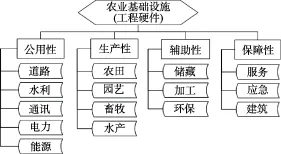
图1 农业基础设施内容与分类Fig.1 Contents and classification of agricultural infrastructure
2 农业基础设施工程化的概念、特征与内容
工程是人们综合应用科学的理论和技术的手段去改造客观世界的具体实践活动以及由此取得的实际成果[50],是在客观自然、经济社会、人文要素和信息环境等边界条件约束下,对技术要素(工艺方法、工具、装备和信息等)与非技术要素(资源、资金、劳力、环境)的集成、构建、运行和管理[51]。农业是历史上最早引入“工程”概念的领域之一,农业基础设施具有狭义工程概念的典型特点,是工程化的对象和前提。
2.1 工程化的概念和内涵
工程化是一个广泛的概念,从科学技术[52]到具体项目,但本质上都是一个由理论到实践、由无形到有形、由要素到系统、由材料到实体的过程。长期以来中国农业在现实中的弱质性、相对落后性,造成了基础设施建设从策划、设计、实施、管护等方面整体上缺乏专门性、科学性、系统性的研究和普及,需要从工程化的角度集成现有成果并加以发展创新。农业基础设施工程化(下文简称“工程化”),就是利用广泛的科学技术理论和成果(技术、工程、管理),在科学的运行机制和标准下,由规范的组织实施,使基础设施全生命周期的质量和功能得以充分保障的过程。其内涵就是按照工程建设管理客观规律,兼顾农业农村发展客观现实,将农业基础设施建设与运行规范化、系统化、持续化的过程,使农业基础设施能够长期、有效、高质量地发挥基础支撑作用。
2.2 工程化的特征
从工程化的概念、内涵、目标和要求看,工程化须是一个理论化、实践化、效用化的过程,具有5方面的特征。1)科学性,即在工程理念、技术、措施等各方面都具有科学知识和技术成果的支撑,经验化的成分较少;2)系统性,即在内容、时间、空间等方面实现系统协调,较少片面性和短期性;3)规范性,即在组织体制、标准规范、建设流程上权威有序、依据可靠、监督有效,较少随意化、失范化和重复建设;4)高效性,即在过程中努力做到布局合理、配套完备、技术先进、建造规范、管理有序,在结果上做到功能到位、运行稳定,减少问题多、档次低、管护差等问题;5)持续性,即在保证质量的前提下,建设成果能与农业现代化发展和产业结构调整同步协调,在效果上实现经济、社会、生态、安全效应的可持续发挥,避免质量事故、提前失效等。
2.3 工程化的内容
就是将工程的理念、工具、方法贯穿到农业基础设施生命周期的全过程,包括农业基础设施建设的工程战略、工程决策、工程准备、工程实施以及工程运营的各个阶段、各个环节,形成一个闭环。
主要内容与各阶段作用如图2。
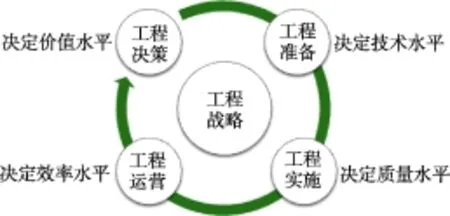
图2 工程化的主要内容与作用Fig.2 Main contents and purposes of engeering
1)工程战略。就是围绕国家或地区经济社会发展目标,在国家、区域、行业内规划确定的重大基础设施建设工程,如国家十三五规划纲要[53]、发改委、水利部、农业、国土资源部等国务院各部门及区域[54]、地方政府所提出的有关农业基础设施中长期规划目标均属此列。
2)工程决策。即对项目投资的必要性、可能性、可行性以及投资的数量、结构、方式进行科学论证和多方案比选。具体包括“投资机会研究、项目规划、可行性研究、项目申请报告、初步设计、评估审查”等,该阶段决定着项目建设的价值,即长远综合效益,具有特殊的必要性和重要性。
3)工程准备。即完成项目建设实施所需要的资金、技术、组织、审批等前期工作。具体包括筹资融资、工程设计、工程招标、申报审批等活动,决定了项目的技术水平和实施能力。
4)工程实施。即完成项目各种土木工程、设施设备等的建设与安装。包括施工建设、工程监理、设备采购安装、竣工验收、生产准备等活动,决定了项目硬件的初始质量水平。
5)工程运营。即工程实体通过有组织的管理操作确保其寿命期内发挥最大使用价值(经济、社会、生态、安全等)的工作。包括生产运行、动态监测、工程后评估、偿还贷款、维护管理、更新改造等活动,决定了项目的运行效率。
3 农业基础设施工程化的现状与趋势
3.1 发展历程
新中国成立以来,农业基础设施工程化主要经历了3个阶段。
1)起步阶段(1949~1965年)。依靠国家投资和群众投入劳动力,我国农业基础设施建设取得巨大成就,重点建设了包括水库、灌渠、机井、堤坝等一批农业水利基础设施和土地开垦、田间道路、防护林等一批农田基础设施,农产品加工储存和防灾减灾设施也有所发展。但只有部分基础设施建设中应用了工程技术,且工程化措施仅局限于工程设计等部分环节,总体上工程化比例小、环节少、水平低。
2)徘徊阶段(1966~1990年)。前期受文革影响,科学技术被排挤,农业基础设施工程化停滞不前;改革开放以后,实施了家庭联产承包制,农业的生产方式、管理体制、经营结构和投入机制等发生了变化,一家一户很难投入大量资金进行具有公益性的农业基础设施建设,同时在国家对农业基础设施建设支持不足情况下,工程化发展受阻,依然停留在传统模式上。
3)发展阶段(1991年至今)。农业基础设施工程化取得长足进步。在 “以工助农、以城带乡”[55]、“工业反哺农业、城市支持乡村[56]”等一系列强农惠农发展理念、政策、技术、标准化等方面取得跨越式进步。特别是十六届五中全会提出建设社会主义新农村的重大历史任务以后[57],农业基础设施进入了快速发展时期,并相应制订了一系列工程管理制度,将“工程”概念从简单的工程设计和建设拓展到“决策、咨询、造价、设计、监理、建造、管理”等多个环节,并率先在工业与民用建筑领域推广,开启了真正意义上的“工程化”建设。工程化理念也开始在农业基础设施建设中强化,工程化措施开始在农业基础设施建设中得到应用,工程化比例增加、环节增多、水平提高。
3.2 发展现状
中国己初步建成覆盖主要农业生产区域的基础设施网络,密度明显提高、承载能力全面加强、建设质量不断提升、服务能力显著增加[58]。如在水利工程建设[59]、病险水库加固、大规模节水灌溉、高标准农田建设[60]、农村道路[61]、设施农业[62]、农产品加工业与一、二、三产业融合[39]以及农村能源环保[63]、农业物联网[64]等的快速发展中,都在逐步引进、建立和强化各类工程化的体制、体系、措施,初步呈现出科学、系统、规范、提效的势头,整体上进入工程化发展初期。
3.3 国外经验
任何国家的农业基础设施的发展水平与该国工业化、城镇化的发展水平密切相关,其次才是农业在国民经济中的地位与作用,这主要因为城乡融合与产业融合造成了农业基础设施的多功能化。通过对美国[65-66]、日本和韩国[67-69]、以色列[70]、德国[71-73]等发达国家农业基础设施工程化的历程可以发现,在中国“四化同步”加快推进的过程中,以下7方面的经验值得中国借鉴,主要包括国家政策的引导支持、财政补贴的投资机制、工程建设程序规范细致、紧紧追随科技进步、产前产中产后兼顾、生产生活生态文化协调、法律法规制度完善。
3.4 发展趋势
中国农业发展水平决定着整个国民经济和社会发展的协调性,必将对基础设施建设的质量要求越来越高,同时因城乡二元结构所造成的城乡基础设施差距也会加快缩小,而工程化是确保这一进程顺利实现的重要路径,并在内容、过程、要求3方面呈现出新的趋势。1)内容系统前瞻,就是要适应农业现代化在技术应用、功能拓展、产业融合方面的加快进步,工程内容要更加完整、关联、支撑、开放,如对机械化智能化[74]的适应性,城乡路网互联互通性[75]和水利设施功能协同性,高技术的集成性[76]和可延展性等。2)过程规范高效,就是要精准实现建设资源投入的最佳功能,使科学决策、快速准备、高效实施、妥善运营成为常态,在制度创新、信息化[77]应用、标准化管理[78]方面不断突破。3)满足持续要求,就是要适应人类文明进步的长远要求,工程内容和过程要满足生态、环保、人本的限制和要求,逐步将农业基础设施扩展到广义农业——食品工业生产体系中[79],使农业现代化成为实现自然与人类相互滋养、和谐共进等文明理想的重要推手。
4 农业基础设施工程化实现路径与推进方法
4.1 实现路径
中国农业现代化面对的是一个变化速度超常的社会巨系统,其自身的复杂性、动态性、开放性和异质性也十分明显,因此基础设施工程化必须超越单个项目和工程,实现各类基础设施的系统、整体、协同推进。从宏观角度看,工程化的总体路径就是将各类基础设施建设的综合决策、实施、评价3个环节科学衔接,使工程化的各项活动得到有效执行,并在农业现代化的不同阶段达到预定目标,在农业基础设施建设各项内容平衡推进的前提下,实现数量与水平的螺旋上升,如图3。
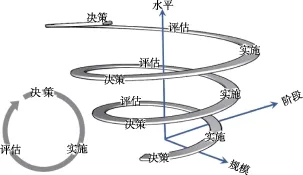
图3 工程化的宏观路径Fig.3 Macroscopic approaches of engieering
4.2 平衡推进的方法
将4大类农业基础设施作为一个系统看,由于不同区域的基础条件不同,建设内容也有差异,全面、协调推进是保证其科学有效的总要求。从方法上看,都包含以下6个步骤:1)根据区域现状和规划目标,明确建设的主要领域和方向(以下称“事项”);2)对基础设施整体和各个事项的现阶段发展程度和未来某个时点的目标要求进行比较分析,确定目标差距;3)分析满足核心需求的主要环节,确定不同事项的协调配套关系与优先顺序;4)确定各事项在特定时点的实现程度和标准;5)平衡资金、人员、资源等必要条件,制订综合推进行动方案;6)对事项进行项目层面的工程化实施。其中,前4个步骤就是要形成如图4所示的“网络平衡计划图”。

图4 某时段的网络平衡计划图Fig.4 Scheme plans of network in certain period
图中圆圈分上下2部分,上部是“事项”、下部是在某一时段的“实现程度”(图中以**表示),实现程度要以国家或区域的中长期规划指标作为基准。图中联线代表相互条件和联系,未画联线的项目表示与其他事项均有关联。通过该平衡计划图,可以初步显示出在一定发展空间内农业基础设施的计划建设规模与顺序,为在各类基础设施建设资金不足[80-81]情况下的科学决策提供依据。
4.3 推进顺序的选择方法
从建设和投入的角度看,不同事项在农业现代化中的建设意义和作用效果上存在差异,因此在资金投入总量有限、投入步骤循序渐进的情况下,必须对需要推进的各事项进行分析、选择与排列、组合,按照客观需求、发展状况和实际能力对不同事项进行决策,把握“意义”和“效果”的平衡,通过对所有事项的“意义-效果”评估,优先安排那些意义较大、便于操作、效果显著的任务。
评估借鉴“GE矩阵[82]”的分析思路,将所有“事项”归纳在如图5的矩阵中(仅为部分示例),每个事项用一个圆圈表示,圆圈大小表示该任务需要的总投资量、圆圈内的数字表示目前已经完成的投资量(比例,图中用“**”示意);矩阵横坐标为“建设效果”,纵坐标为“建设意义”,找出每个事项中影响建设效果和建设意义的因素并进行加权,得出各事件的评价值(5分制),从而确定出各事件在评价矩阵中的位置。
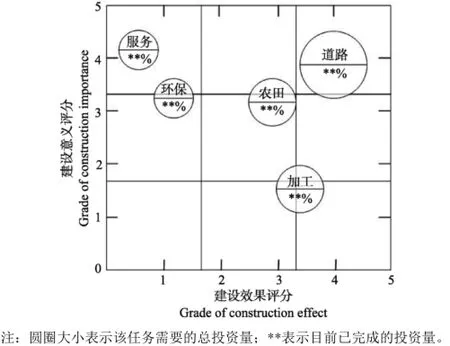
图5 事项综合评价矩阵Fig.5 Comprehensive evaluation matrix
4.4 事件评估方法与结果
1)建设效果评价方法
建设效果主要包括对实现农业现代化目标的贡献(目标贡献)、对提高劳动生产率的贡献(效率贡献)、对带动相关产业发展的贡献(拓展贡献)、投入建设后产生效果的时间(见效速度)等方面。其中,目标贡献主要包括对粮食安全、主要农产品有效供给、农民增收和可持续发展等的贡献;拓展贡献主要是指对其他行业、产业、领域所能提供的新增长或新需求,特别是工业化、城镇化、信息化所带来的需求增加。
2)建设意义评价方法
建设意义主要包括投入建设的必要性(必要性)、公共性与社会性(公益性)、对现代农业的支撑作用(支撑性)等。其中,“必要性”主要是指事件目标是否应该尽快达到,主要从其实施的重要性、必要性以及当前发展状况方面综合判断,如必要性大,而当前发展的水平较低,则得分较高;“公益性”主要是为了衡量某项任务由政府投入的急迫性,同时判断宏观调控与市场调节的同向性,如公共性、社会性显著,但经济效益较低或投资回收期较长的任务得分较高;“支撑性”主要是从农业现代化其他方面的角度评价某项任务对提升农业现代化其他各个方面发展水平(如组织化、规模化、信息化、机械化等)的贡献与作用,如该项任务的完成有利于促进其他方面的实现,则得分较高。
3)评价工具与结果使用
通过对每一项事件进行定性(德尔菲法[83]等)和定量的评价赋值,获得其评价值。各项事件的位置确定后,则应根据国家先行的有关项目规划、正在实施的重大项目、现阶段农业发展战略重点以及国家可能新增的资金投入量,按照图6所表示的推进战略选择方向进行任务安排。
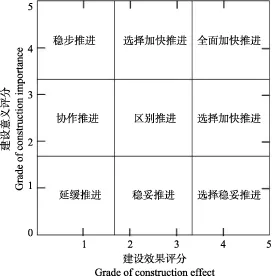
图6 事项推进战略选择矩阵Fig.6 Selection matrix to promote strategic planning
4)阶段性发展评价
通过特定阶段内指标的落实来实现发展目标是中国国民经济与社会发展的主要做法与经验,如国家及行业、部门的“第十三个五年规划纲要”等均属此列。农业基础设施建设作为中国农业现代化发展进程中的先导条件,既要遵循上位规划的要求,也须探索建立自身发展的个性化指标,以更高效、更精准地服从、服务于国家战略,如国家十三五规划中提出的“农网供电可靠率达到99.8%[84]”的指标等。在农业基础设施建设的整体推进上,要体现出综合平衡的特点,通过各个方面实现程度的协调同步,实现整体上的高效、有序推进。即需要在分析不同阶段各事项可能的发展程度和相互协调配套需求的基础上,以“基础设施综合配套率”来衡量综合实现程度(本文仅提出该指标、具体构建方式另文讨论),并建立起“中长期发展平衡表”,明确农业基础设施发展现状,提出中、长期基础设施综合配套率发展目标,在宏观层面指导农业基础设施按照“整体性、系统性、协同性”的内在规律和时代要求进行建设。
5 结论与讨论
农业基础设施在工程硬件方面可以分为公用性、生产性、辅助性和保障性4大类,在农业现代化过程中发挥着越来越重要的基础性、先导性、支撑性作用。农业基础设施工程化在总体上就是将工程的理念、方法、技术、结果运用到农业工程建设领域。在路径上,工程化需要在项目实施的微观和综合计划的宏观2个层面推进。微观上就是要将工程战略、工程决策、工程准备、工程实施以及工程运营的工具和方法贯穿在农业基本建设项目生命周期的全过程;宏观上就是将各类基础设施建设综合决策、实施、评价3个环节科学衔接,通过对农业基础设施建设各项事件进行分析、选择、排序等确定总体建设内容和目标,并在综合决策的基础上确定中长期发展程度的指标,以与国家发展关键时点的要求相衔接、相协调,整体上发挥出推进农业现代化建设的最大效果。中国农业基础设施工程化发展水平还不高,本研究提出的观点、方法和工具,可以为工程化在农业领域的普及与深入推进提供有益的借鉴,特别是对那些新的农业开发区域(非耕地开发等),具有直接的指导作用。
由于当前中国农业基础设施建设的规则和统计数据还存在许多空白,本文仅从方法的角度上进行了研究与构建,还无法形成完整量化的实际案例,同时也造成文中方法中所用工具的定性分析多于定量判断,对评估的精度造成不利影响,但随着中国城乡管理数字化、信息化、现代化水平的不断提高,特别是大数据技术的进步、数字中国的实施,这些工具、方法的意义和作用将越来越大,决策的精准度也会不断提高。
[1] 罗超烈. 农业基础设施投入对农业产出的影响分析:基于Panel Data模型[J]. 安徽理工大学学报:社会科学版,2015,17(1):11-15.
Luo Chaolie. Analysis of the impact of infrastructure on agricultural output: based on panel data model[J]. Journal of Anhui University of Science and Technology: Social Science, 2015, 17(1): 11-15. (in Chinese with English abstract)
[2] 康小兰,李冬文,刘滨. 农业基础建设与粮食产出关系的实证分析:基于1991—2009年时间序列数据[J]. 江西农业大学学报:社会科学版,2013,12(4):432-437.
Kang Xiaolan, Li Dongwen, Liu Bin. The empirical analysis of China’s agricultural infrastructure construction and grain output relations: Based on 1991—2009 series data[J]. Journal of Jiangxi Agricultural University: Social Sciences Edition, 2013, 12(4): 432-437. (in Chinese with English abstract)
[3] 曾福生,李飞. 农业基础设施对粮食生产的成本节约效应估算:基于似无相关回归方法[J]. 中国农村经济,2015(6):4-12.
[4] 李姗. 从“靠天收”到“稳丰产”:我国高标准农田建设迈出坚实一步[J]. 农村工作通讯,2015(14):8-11.
[5] 杜君楠,郑少锋. 农业基础设施建设水平与农业经济发展的协整关系分析[J]. 西北农林科技大学学报:社会科学版,2012,12(4):37-40.
Du Junnan, Zheng Shaofeng. Co-integration test on agricultural infrastructure and agricultural development[J]. Journal of Northwest A&F University:Social Science Edition, 2012, 12(4): 37-40. (in Chinese with English abstract)
[6] 王敏,田国双. 我国农业基础设施建设对农业经济增长的影响分析[J]. 东北农业大学学报:社会科学版,2011,9(6):22-25.
Wang Min, Tian Guoshuang. An impact analysis of Chinese agricultural infrastructure to the economic growth[J]. Journal of Northeast Agricultural University: Social Science Edition, 2011, 9(6): 22-25. (in Chinese with English abstract)
[7] 谢海军,翟印礼. 辽宁省农业基础设施水平与农村经济增长:基于Panel Data模型的实证分析[J]. 农业技术经济,2008(4):106-111.
[8] 高雪萍,吴芝花,翁贞林. 农业基础设施促进农业生产增长的实证分析[J]. 江西农业大学学报,2008,30(4):751-756.
Gao Xueping, Wu Zhihua, Weng Zhenlin. An empirical analysis of the relation ship between rural infrastructure and agricultural production[J]. Acta Agriculturae Universitatis Jiangxiensis, 2008, 30(4): 751-756. (in Chinese with English abstract)
[9] 李飞,刘寒波. 农业基础设施建设对农村居民消费需求的影响:基于动态演化视角[J]. 对外经贸,2015(5):98-100.
[10] 陈冲. 政府公共支出对居民消费需求影响的动态演化[J].统计研究,2011(5):13-20.
Chen Chong. The dynamic evolution of the influence of government spending on consumers demand[J]. Statistical Research, 2011(5): 13-20. (in Chinese with English abstract)
[11] 方松海,王为农,黄汉权. 增加农民收入与扩大农村消费研究[J]. 管理世界,2011(5):66-80.
Fang Songhai, Wang Weinong, Huang Hanquan. A study on the increase in peasants’ income and on the policy for enlarging consumption in villages[J]. Management World, 2011(5): 66-80. (in Chinese with English abstract)
[12] 相小萌. 基于贵州省农业基础设施建设的反贫困研究[J].南方农村,2014(7);61-65.
Xiang Xiaomeng. Research on the anti poverty of agricultural infrastructure construction in Guizhou Province[J]. South China Rural Area, 2014(7): 61-65. (in Chinese with English abstract)
[13] 刘芳,王慧芳,张利国. 国家级贫困县农村致贫因素实证分析:以江西省为例[J]. 新疆农垦经济,2014(10):8-11.
[14] 谭贤楚. 民族山区转型农村返贫人口的多维成因探讨:基于恩施州的实证[J]. 前沿,2013(11):161-162.
[15] 中华人民共和国国家发展和改革委员会.“十三五”着力加强农业基础设施建设[EB/OL]. (2016-2-17)[2016-4-30]. http://finance.ifeng.com/a/20160217/14220149_0.shtml.
[16] 詹慧龙,刘虹,唐冲. 我国农业基础设施建设及服务需求研究[J]. 农村经济,2015(12):116-120.
Zhan Huilong, Liu Hong, Tang Chong. Research on the construction of agricultural infrastructure and service demand in China[J]. Rural Economy, 2015(12): 116-120. (in Chinese with English abstract)
[17] 许静波. 我国农业基础设施建设的现状问题及对策[J]. 东北农业大学学报:社会科学版,2011,9(2):9-13.
Xu Jingbo. The current problems and countermeasures of chinese agricultural infrastructure construction[J]. Journal of Northeast Agricultural University: Social Science Edition, 2011, 9(2): 9-13. (in Chinese with English abstract)
[18] 王永春,王哲. 农业基础设施建设现状、挑战及应对[J]. 经济研究导刊,2015(24):22-23.
Wang Yongchun, Wang Zhe. Present situation, challenges and countermeasures of agricultural infrastructure construction[J]. Economic Research Guide, 2015(24): 22-23. (in Chinese with English abstract)
[19] 何平均. 农业基础设施项目融资的适应性及政策思路[J].农业经济与管理,2014(3):16-21.
He Pingjun. Adaptability and policy ideas of agricultural infrastructure project financing[J]. Agricultural Economics and Management, 2014(3): 16-21.
[20] 何平均. 我国农业基础设施供给效率的实证分析:基于SBM和Malmquist的计量解释[J]. 软科学,2014(2):127-130.
He Pingjun. Positive analysis on Chinese agricultural infrastructure supply efficiency: Econometric explanation based on SBM and Malmquist index[J]. Soft Science, 2014(2): 127-130. (in Chinese with English abstract)
[21] 黄伟南,曾福生. 农业基础设施投融资建设的研究综述[J].世界农业,2015(3):70-75.
Huang Weinan, Zeng Fusheng. Research on investment and financing construction of agricultural infrastructure[J]. World Agriculture, 2015(3): 70-75. (in Chinese with English abstract)
[22] 黄伟南,曾福生. 国外农业基础设施投融资模式的经验分析[J]. 世界农业,2014(3):67-71.
Huang Weinan, Zeng Fusheng. Empirical analysis of foreign agricultural infrastructure investment and financing mode and suggestions[J]. World Agriculture, 2014(3): 67-71. (in Chinese with English abstract)
[23] 杨建斌. BOT项目融资模式在农业基础设施建设中的应用[J]. 湖南农业科学,2011(5):149-151.
Yang Jianbin. Application of BOT project financing Mode in construction of agricultural infrastructure[J]. Hunan Agricultural Sciences, 2011(5): 149-151. (in Chinese with English abstract)
[24] 唐祥来,杨娟娟. 农业基础设施建设PPP模式的投资激励决策机制[J]. 农业技术经济,2012(10):112-119.
Tang Xianglai, Yang Juanjuan. Incentives mechanism on investment decision-making for the PPP mode of agricultural infrastructure construction[J]. Journal of Agrotechnical Economics, 2012(10): 112-119. (in Chinese with English abstract)
[25] 王顺乾. 浅析农田水利工程建设的难点及其解决措施[J].广东科技,2014(24):103-104.
Wang Shunqian. Analysis on the difficulties and solutions in the construction of farmland water conservancy project[J]. Guangdong Science & Technology, 2014(24): 103-104. (in Chinese with English abstract)
[26] 戴林生. 浅谈如何加强农业基本建设项目的管理[J]. 农业装备技术,2012(3):58-59.
[27] 杨建斌. 基于项目管理的农业基础设施建设及管理研究[J]. 陕西农业科学,2011(2):177-178.
Yang Jianbin. Research on agricultural infrastructure construction and management based on project management [J]. Shaanxi Journal of Agricultural Sciences, 2011(2): 177-178. (in Chinese with English abstract)
[28] 齐二石,姜琳. 大型农业建设项目的复杂性特征分析[J].中国农机化,2008(3):37-39.
QI Ershi, Jiang Lin. Analysis of complexity of large-scale agricultural construction projects[J]. Chinese Agricultural Mechanization, 2008(3): 37-39. (in Chinese with English abstract)
[29] 费振国,侯军岐. 项目管理在农业基础设施建设中的应用研究[J]. 重庆大学学报:社会科学版,2007,13(6):43-46.
Fei Zhenguo, Hou Junqi. Research on the application of project management in agricultural infrastructure[J]. Journal of Chongqing University:Social Science Edition, 2007, 13(6): 43-46. (in Chinese with English abstract)
[30] 习近平. 在省部级主要领导干部学习贯彻党的十八届五中全会精神专题研讨班上的讲话[M]. 北京:人民出版社,2016.
[31] 何平均. 中国农业基础设施供给效率研究[M]. 北京:经济科学出版社,2013.
[32] 温铁军,张林秀. 社会主义新农村的基础设施建设与管理问题研究[M]. 北京:科学出版社,2011.
[33] 齐飞,朱明,周新群,等. 农业工程与中国农业现代化相互关系分析[J]. 农业工程学报,2015,31(1):1-10.
Qi Fei, Zhu Ming, Zhou Xinqun, et al. Relationship analysis between agricultural engineering and agricultural modernization in China[J]. Transactions of the Chinese Society of Agricultural Engineering (Transactions of the CSAE), 2015, 31(1): 1-10. (in Chinese with English abstract)
[34] 黄勇民,蓝磊. 多层次农业基础设施体系建设的经济学分析与政府职能定位[J]. 乡镇经济,2006(3):17-19.
[35] 孟秋菊. 现代农业与农业现代化概念辨析[J]. 农业现代化研究,2008(3):267-271.
Meng Qiuju. Discrimination of concepts of modern agriculture and agricultural modernization[J]. Research of Agricultural Modernization, 2008(3): 267-271. (in Chinese with English abstract)
[36] 张雪. 新常态下如何发展现代农业:访农业部部长韩长赋[J]. 农村. 农业. 农民(B版),2015(1):10-11.
Zhang Xue. How to develop modern agriculture under the new normal condition: Visiting minister of agriculture Han Changfu[J]. Country Agriculture Farmers(B), 2015(1): 10-11. (in Chinese with English abstract)
[37] 官琦,王志奇,任建. 云南省“十三五”公路养护基础设施建设与机械设备配置发展规模研究[J]. 河北企业,2016(2):44-45.
[38] 周尚新. 机耕道是农村最重要基础设施之一:对津市农村机耕道建设的调研与思考[J]. 湖南农机,2013(2):9-10.
[39] 张辉,孙素芬,谭翠萍. 2004-2014年我国农业信息化发展及趋势研究[J]. 安徽农业科学,2014,42(35):12582-12584.
Zhang Hui, Sun Sufen, Tan Cuiping. Research on the development and trend of agricultural informatization in China during 2004-2014[J]. Journal of Anhui Agricultural Sciences, 2014, 42(35): 12582-12584. (in Chinese with English abstract)
[40] 路辉,刘伟. “互联网+”在现代农业中的应用现状及发展对策[J]. 现代农业科技,2015(15):333-334.
[41] 杨玲. 借鉴荷兰经验促进我国多功能农业发展[J]. 产业与科技论坛,2013(3):7-8.
Yang Ling. Learn from the experience of Holland and promote the development of multi function agriculture in China[J]. Industrial & Science Tribune, 2013(3): 7-8. (in Chinese with English abstract)
[42] 赵华甫,张莉,吴克宁,等. 北京城市生态基础设施建设之都市农业途径[J]. 资源与产业,2011(4):22-26.
Zhao Huafu, Zhang Li, Wu Kening, et al. Urbanagriculture ways to urban ecological infrastructure construction in beijing[J]. Resources & Industries, 2011(4): 22-26. (in Chinese with English abstract)
[43] 江维国. 我国农业旅游可持续发展研究[J]. 北方园艺,2016(6):171-175.
Jiang Weiguo. Research on the sustainable development of agricultural tourism in China[J]. Northern Horticulture, 2016(6): 171-175. (in Chinese with English abstract)
[44] 刘新. 农业多功能性演化与“三农”问题探究[J]. 江苏农业科学,2011,39(3):599-601.
Liu Xin. Evolution of agricultural multiple functionality and study on problems of famers rural areas agricultural production[J]. Jiangsu Agricultural Sciences, 2011, 39(3): 599-601. (in Chinese with English abstract)
[45] 领跑现代农业新征程:“十二五”以来都市现代农业发展成就综述[EB/OL]. (2016-4-25)[2016-4-30]. http://www.moa. gov.cn/zwllm/zwdt/201604/t20160425_5107114.htm.
[46] 刘红耀,温利华. 农业生产在气候变化中的脆弱性分析:以邯郸市为例[J]. 山西农业大学学报:自然科学版,2016,36(4):283-287.
Liu Hongyao, Wen Lihua. The vulnerability analysis of agricultural production to climate change Handan city as an example[J]. Journal of Shanxi Agricultural University: Natural Science Edition, 2016, 36(4): 283-287. (in Chinese with English abstract)
[47] 高云,詹慧龙,陈伟忠,等. 自然灾害对我国农业的影响研究[J]. 灾害学,2013(3):79-84.
GaoYun, Zhan Huilong, Chen Weizhong, et al. Study on the impact of natural disasters on agriculture in China[J]. Journal of Catastrophology, 2013(3): 79-84. (in Chinese with English abstract)
[48] 韩长赋. 以新的发展理念引领现代农业发展[J]. 农村实用技术,2016(2):14-16.
Han Changfu. Leading the development of modern agriculture with the new development concept[J]. Rural Practical Technology, 2016(2): 14-16. (in Chinese with English abstract)
[49] 陈文科,林后春. 农业基础设施与可持续发展[J]. 中国农村观察,2000(1):9-21.
Chen Wenke, Lin Houcun. Agricultural infrastructure and sustainable development[J]. China Rural Survey, 2000(1): 9-21. (in Chinese with English abstract)
[50] 朱高峰. 论工程的综合性[J]. 高等工程教育研究,2011(2):1-4.
Zhu Gaofeng. On engineering synthesis[J]. Research in Higher Education of Engineering, 2011(2): 1-4. (in Chinese with English abstract)
[51] 殷瑞钰. 哲学视野中的工程[J]. 中国工程科学,2008,10(3):4-7.
Yin Ruiyu. Engineering in the field of vision of philosophy[J]. Engineering Sciences, 2008, 10(3): 4-7. (in Chinese with English abstract)
[52] 周济. 工程化产业化是创新驱动发展的关键[J]. 求是,2012(16):33-34.
[53] 解读“十三五”规划亮点和重大工程. [EB/OL]. (2016-3-07) [2016-4-30]. http://www.scio.gov.cn/ztk/dtzt/2015/33681/33685/ Document/1471173/1471173.htm.
[54] 中国发布京津冀现代农业协同发展规划[EB/OL]. (2016-3-31)[2016-4-30]. http://news.163.com/16/0331/19/BJGR556-F00014JB6.html.
[55] 朱秀茹,王爱兰. 试论我国社会主义新农村建设[J]. 中国乡镇企业会计,2007(6):90-91.
Zhu Xiuru, Wang Ailan. On the construction of new socialist countryside in China[J]. China Township Enterprises Accounting, 2007(6): 90-91. (in Chinese with English abstract)
[56] 蔡昉. “工业反哺农业、城市支持农村”的经济学分析[J].中国农村经济,2006(1):11-17.
Cai Fang. Economic analysis of ‘industry nurturing agriculture and city support the countryside’[J]. Chinese Rural Economy, 2006(1): 11-17. (in Chinese with English abstract)
[57] 中国共产党第十六届中央委员会第五次全体会议文件汇编[M]. 北京:人民出版社,2005.
[58] 孙良. 农业基础设施的困境与出路[J]. 经济问题探索,1996(4):13-15.
Sun Liang. The predicament and outlet of agricultural infrastructure[J]. Inquiry Into Economic Problems, 1996(4): 13-15. (in Chinese with English abstract)
[59] “十二五”水利改革发展成效显著[EB/OL]. (2016-2-17)[2016-4-30]. http://www.sdpc.gov.cn/xwzx/xwfb/201602/t20160217_ 774760.html.
[60] 杜鹰. 加强农田水利建设 促进农业可持续发展[J]. 中国水利,2013(21):4.
Du Ying. Strengthen waterworks construction and promote sustainable development agriculture[J]. China Water Resources, 2013(21): 4. (in Chinese with English abstract)
[61] 卢元军. 谈谈农机化公共服务体系基础设施建设问题[J].农机质量与监督,2013(12):28-29.
Lu Yuanjun. Talking about the construction of agricultural machinery based public service system infrastructure[J]. Agricultural Machinery Quality & Supervision, 2013(12): 28-29. (in Chinese with English abstract)
[62] 鲍顺淑,齐飞,魏晓明,等. 中国设施园艺发展的意义和作用[J]. 北方园艺,2010(15):25-28.
Bao Shunshu, Qi Fei, Wei Xiaoming, et al. Significance and role of protected horticulture in China[J]. Northern Horticulture, 2010(15): 25-28. (in Chinese with English abstract)
[63] 马建萍. 浅析农村能源与生态环境建设的关系[J]. 能源与环境,2006(2):53-56.
Ma Jianping. Analysis on the relationship between rural energy and ecological environment construction[J]. Energy and Environment, 2006(2): 53-56.
[64] 李灯华,李哲敏,许世卫. 我国农业物联网产业化现状与对策[J]. 广东农业科学,2015(20):149-157.
Li Denghua, Li Zhemin, Xu Shiwei. Situation and countermeasures of industrialization of agricultural IoT in China[J]. Guangdong Agricultural Sciences, 2015(20): 149-157. (in Chinese with English abstract)
[65] 张金艳. 美国农业基础建设的经验及启示[J]. 国际经贸探索,2009,25(2):72-76.
Zhang Jinyan. Experiences of american agricultural infrastructure construction and enlightenments to China[J]. International Economics and Trade Research, 2009, 25(2): 72-76. (in Chinese with English abstract)
[66] 王世群,李文明. 美国农业灾害援助体系启示[J]. 中国合作经济,2011(2):45-46.
Wang Shiqun, Li Wenming. Enlightenment from the system of agricultural disaster assistance in the United States[J]. China Co-operation Economy, 2011(2): 45-46. (in Chinese with English abstract)
[67] 朱行. 日本农业发展近况[J]. 粮食流通技术,2008(1):40-43.
Zhu Hang. Survery of Japan’s agricultural development[J]. Grain Distribution Technology, 2008(1): 40-43. (in Chinese with English abstract)
[68] 田祥宇. 日韩农业基础设施建设融资经验及其对我国的启示[J]. 管理现代化,2010(5):58-60
Tian Xiangyu. Financing experience of agricultural infrastructure construction in Japan and South Korea and its enlightenment to China[J]. Modernization of Management, 2010(5): 58-60(in Chinese with English abstract)
[69] 王兆君,宣莹,王军. 韩国新村运动对青岛市社会主义新农村建设的启示[J]. 商业研究,2008(12):126-130.
Wang Zhaojun, Xuan Ying, Wang Jun. Enlightenment of South Korean new village movement to the construction of new socialist countryside in Qingdao[J]. Commercial Research, 2008(12): 126-130. (in Chinese with English abstract)
[70] 陈玉光. 荷、日、以发展高效农业的主要经验及对我国的启示[J]. 中共济南市委党校学报,2010(1):52-56.
Chen Yuguang. Major experience on developing high efficient agricultural in the Netherlands, Japan and Israel and the implications to China[J]. Journal of the Party School of CPC Jinan Municipal Committee, 2010(1): 52-56. (in Chinese with English abstract)
[71] 曲福田. 典型国家和地区土地整理的经验及启示[J].资源与人居环境,2007(20):12-17.
Qu Futian. Experience and enlightenment of land consolidation in typical countries and regions[J]. Resources Inhabitant and Environment, 2007(20): 12-17. (in Chinese with English abstract)
[72] 丁恩俊,周维禄,谢德体. 国外土地整理实践对我国土地整理的启示[J]. 西南农业大学学报:社会科学版,2006,4(2):11-15.
Ding Enjun, Zhou Weilu, Xie Deti. Practice of land consolidation in a few countries and its enlightemnent to China[J]. Journal of Southwest Agricultural University:Social Science Edition, 2006, 4(2): 11-15. (in Chinese with English abstract)
[73] 徐建春. 联邦德国乡村土地整理的特点及启示[J]. 中国农村经济,2001(6):75-80.
Xu Jianchun. Characteristics of rural land consolidation in the Federal Republic of Germany and its implications[J]. Chinese Rural Economy, 2001(6): 75-80. (in Chinese with English abstract)
[74] 赵璐,杨印生. 农业物联网技术与农业机械化发展[J]. 农机化研究,2011(8):226-229.
Zhao Lu, Yang Yinsheng. The Technology of agricultural IoT and the development of agricultural mechanization[J]. Journal of Agricultural Mechanization Research, 2011(8): 226-229. (in Chinese with English abstract)
[75] 王中莉,王忠伟. 湖南省乡村公路发展现状及对策研究[J].森林工程,2009,25(4):65-67.
Wang Zhongli, Wang Zhongwei. Research on dvelopment status strategy of rural highways in Hunan Province[J]. Forest Engineering, 2009, 25(4): 65-67. (in Chinese with English abstract)
[76] 解建仓,罗军刚. 水利信息化综合集成服务平台及应用模式[J]. 水利信息化,2010(5):18-22.
Xie Jiancang, Luo Jungang. Integrated service platform for the information explosion process in water resources industry and its application pattern[J]. Water Resources Informatization, 2010(5): 18-22. (in Chinese with English abstract)
[77] 高万林,李桢,于丽娜,等. 加快农业信息化建设 促进农业现代化发展[J]. 农业现代化研究,2010,31(3):257-261.
Gao Wanlin, Li Zhen, Yu Lina, et al. Speed up development of agricultural informatization and improve construction of agricultural modernization[J]. Research of Agricultural Modernization, 2010, 31(3): 257-261. (in Chinese with English abstract)
[78] 徐丽丽,赵跃龙,李树君. 我国农业工程建设标准化管理研究[J]. 天津农业科学,2014,20(11): 100-105.
Xu Lili, Zhao Yuelong, Li Shujun. Management system on agricultural engineering construction standardization in China[J]. Tianjin Agricultural Sciences, 2014, 20(11): 100-105. (in Chinese with English abstract)
[79] 林后春. 农业基础设施的供给与需求[J]. 中国社会科学,1995(4):54-64.
Lin Houcun. Supply and demand of agricultural infrastructure[J]. Social Sciences In China, 1995(4): 54-64. (in Chinese with English abstract)
[80] 朱铁辉,茹蕾,陈永福,等. 利用政策性金融贷款实施农业基础设施建设的理论与经验探讨[J]. 财政研究,2012(4):56-60.
Zhu Tiehui, Ru Lei, Chen Yongfu, et al. Theory and experience study on using of policy finance loan to carry out agricultural infrastructure construction[J]. Public Finance Research, 2012(4): 56-60. (in Chinese with English abstract)
[81] 张宝山. 打通农业命脉“最后一公里”[J]. 中国人大, 2015(19):12-13.
[82] 解素慧. 现代咨询方法与实务[M]. 北京:中国计划出版社,2014:31.
[83] 袁志彬,任中保. 德尔菲法在技术预见中的应用与思考[J].科技管理研究,2006(10):217-219.
[84] 中华人民共和国国民经济和社会发展第十三个五年规划纲要[EB/OL]. (2016-3-18)[2016-4-30]. http://sh.xinhuanet. com/2016-03/18/c_135200400.htm
Approaches and methods of infrastructure engineering during agricultural modernization
Qi Fei1,2,3, Zhou Xinqun4, Wu Zhengwen1,3, Zhang Xuejun1,3
(1. Chinese Academy of Agricultural Engineering, Beijing 100125, China; 2. Xinjiang Academy of Agricultural and Reclamation Science, Shihezi 832000, China; 3. Key Laboratory of Farm Building in Structure and Construction, Ministry of Agriculture, Beijing 100125, China; 4. Science and Technology Department, Chinese Academy of Agricultural Engineering, Beijing 100125, China)
Progress and development of Chinese agricultural modernization are accompanied by the rapid changing of the society. Agricultural infrastructure, one of the core factors, has the characteristics of complexity, dynamism and openness. Construction quality and comprehensive benefit need modern engineering theory and methods to support the whole process of agricultural modernization. Taking productive hardware infrastructure as research objects, this paper studied and analyzed the concept, connotation, characteristics, content and current situation of agricultural infrastructure. And the concept, characteristics, content, mutual relation and development trend of agricultural infrastructure engineering were proposed. This paper pointed out that agricultural infrastructure mainly refers to the basic hardware facilities to improve the operating ability of agricultural production and represents the pilot factor of agricultural and rural development, and it is the premise of strengthening the foundation of agriculture, and the key to improve the competitiveness of agriculture. And the quality and long term are the important elements of the construction of the infrastructure in the future. Agricultural infrastructure should include roads, water conservancy, telecommunications, electricity, energy, farmland construction, horticulture, animal husbandry, aquatic facilities, storage, processing, environmental protection, services, emergency, construction, and so on. Agricultural infrastructure engineering means the procedure, making the quality and function of the whole life cycle of infrastructure fully guaranteed based on the theories and achievements of science and technology under the scientific operation mechanism and standard specification implemented by the organization. And the agricultural infrastructure engineering has the characteristics of scientific nature, systematicness, standardization, high efficiency and persistence. Agricultural infrastructure engineering is composed of project strategy, engineering decision-making, engineering preparation, engineering implementation and the various stages of the project operation and the closed loop of the 4 factors. Agricultural infrastructure engineering mainly experiences 3 stages. In the early stage of engineering development, agricultural infrastructure engineering has the trend of piloting the content system and meets the sustainable development requirements. The results showed that agricultural infrastructure engineering means the applications of the concept, methods, techniques and the results of the project in the construction of agricultural engineering. And the agricultural infrastructure engineering was promoted from microcosmic and macroscopic aspects. At the microscopic aspect, the tools and methods of the engineering strategy, engineering decision, project preparation, project implementation and project operation are considered throughout the whole process of the life cycle of the agricultural basic construction project. At the macroscopic aspect, it needs to link the comprehensive decision of various constructions, implementations and evaluations, and systematize and optimize the advancement of the timing, extent, goals, and so on. These practices can maximize the long-term stability of agricultural infrastructure in Chinese agricultural modernization. In the circumstance of accelerating China’s agricultural modernization, the contents of agricultural infrastructure engineering need to be enriched and improved, and the views, methods, and tools revealed in this study can provide the basis for advancing this process.
agriculture; engineering; structures; modern agriculture; infrastructure; approaches; methods
10.11975/j.issn.1002-6819.2017.05.003
S2
A
1002-6819(2017)-05-0016-10
齐 飞,周新群,吴政文,张学军. 农业现代化过程中基础设施工程化路径与方法[J]. 农业工程学报,2017,33(5):16-25.
10.11975/j.issn.1002-6819.2017.05.003 http://www.tcsae.org
Qi Fei, Zhou Xinqun, Wu Zhengwen, Zhang Xuejun. Approaches and methods of infrastructure engineering during agricultural modernization[J]. Transactions of the Chinese Society of Agricultural Engineering (Transactions of the CSAE), 2017, 33(5): 16-25. (in Chinese with English abstract) doi:10.11975/j.issn.1002-6819.2017.05.003 http://www.tcsae.org
2016-06-04
2017-02-28
公益性行业(农业)科研专项:适合西北非耕地园艺作物栽培的温室结构与建造技术研究与产业化示范(201203002)
齐 飞,男,总工程师、研究员,主要从事温室结构、设备、材料和产业发展方面的研究。北京 农业部规划设计研究院,100125。
Email:qf2008@188.com

